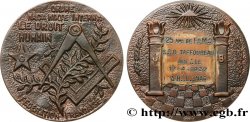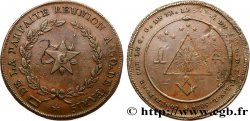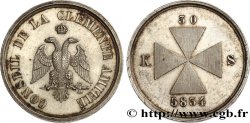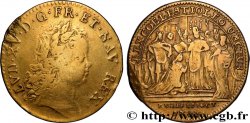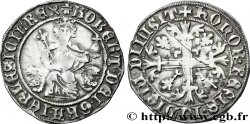E-auction 559-494353 - fjt_613494 - FRANC-MAÇONNERIE - PARIS LA CLÉMENTE AMITIÉ 1834
Sie müssen angeschlossen sein und von cgb.fr genehmigt werden, um in einer E-Auktion teilzunehmen.Melden Sie sich an, um zu wetten..Die Kontobestätigungen sind innerhalb von 48 Stunden nach Ihrer Anmeldung gemacht.Warten Sie nicht bis die letzten zwei Tage vor dem Abschluss eines Verkaufs, um Ihre Registrierung abzuschließen. Klickend "BIETEN" verpflichten Sie sich vertraglich, diesen Artikel zu kaufen und Sie nehmen ohne Reserve die allgemeinen Verkaufsbedingungen für den e-auctions zu cgb.fr an.
Der Verkauf wird an der Zeit auf der Übersichtsseite angezeigt geschlossen werden. Angebote, die nach der Schließung Zeit empfangen sind, werden nicht gültig.
Bitte beachten Sie, dass die Fristen für die Einreichung Ihres Angebots auf unsere Server können variieren und es kann zur Ablehnung Ihres Angebots entstehen, wenn es in den letzten Sekunden des Verkaufs gesendet wird. Die Angebote sollen mit ganzer Zahl ausgeführt sein, Sie können Kommas oder des Punktes in Ihrem Angebot nicht erfassen. Bei Fragen klicken Sie hier, um einen Blick auf die FAQ E-Auktionen.
KEINE ANSCHAFFUNGSKOSTEN FÜR DIE KÄUFER.
KEINE ANSCHAFFUNGSKOSTEN FÜR DIE KÄUFER.
| Schätzung : | 75 € |
| Preis : | 52 € |
| Höchstgebot : | 52 € |
| Verkaufsende : | 01 Januar 2024 19:36:40 |
| Bieter : | 7 Bieter |
Type : LA CLÉMENTE AMITIÉ
Datum: 1834
Metall : Silber
Durchmesser : 26 mm
Stempelstellung : 12 h.
Gewicht : 7,30 g.
Rand lisse
Punze : lampe
Seltenheitsgrad : R2
N° im Nachschlagewerk :
Vorderseite
Titulatur der Vorderseite CONSEIL DE LA CLÉMENTE AMITIÉ.
Beschreibung Vorderseite Aigle bicéphale couronné posé sur une épée.
Rückseite
Titulatur der Rückseite K / S / 30 / 5834.
Beschreibung Rückseite Croix de Malte hachurée verticalement (le rouge héraldique) K à gauche, S à droite, 30 en haut et 5834 en bas.
Kommentare
Ce jeton est une variante du Labouret 166 car il ne porte pas de bélière et est donc un jeton et non un bijou.
Marc Labouret consacre un gros article à cette loge dont il n’hésite pas à dire qu’elle est l’une des plus importantes du XIXe siècle avec Victor Schoelcher, Camille Pelletan ou Eugène le Roy .
La franc-maçonnerie s’implante en France aux alentours du premier quart du XVIIIe s. sous l’influence d’aristocrates anglais. Initiatique, elle est fondée sur le rite hiramique, du nom d’Hiram de Tyr, personnage biblique, architecte du roi Salomon sur le chantier du Temple et qui a résisté à la torture sans livrer ses secrets. Hiram a aussi donné un point de départ du calendrier maçonnique commençant 4000 ans avant le calendrier chrétien. Les symboles servent de signes de reconnaissance entre les initiés, notamment des outils de constructeur de cathédrales (équerre, compas, niveau, maillet, etc.), des formes (triangle, étoile), des nombres (trois, cinq, sept) et des lettres.
This token is a variant of the Labouret 166 because it does not have a bail and is therefore a token and not a piece of jewelry. Marc Labouret devotes a large article to this lodge, which he does not hesitate to say is one of the most important of the 19th century, along with Victor Schoelcher, Camille Pelletan and Eugène le Roy. Freemasonry was established in France around the first quarter of the 18th century under the influence of English aristocrats. Initiatory, it is based on the Hiramic rite, named after Hiram of Tyre, a biblical character, architect of King Solomon on the construction site of the Temple, who resisted torture without revealing his secrets. Hiram also gave a starting point for the Masonic calendar beginning 4000 years before the Christian calendar. Symbols serve as signs of recognition between initiates, including cathedral builder's tools (square, compass, level, mallet, etc.), shapes (triangle, star), numbers (three, five, seven) and letters
Marc Labouret consacre un gros article à cette loge dont il n’hésite pas à dire qu’elle est l’une des plus importantes du XIXe siècle avec Victor Schoelcher, Camille Pelletan ou Eugène le Roy .
La franc-maçonnerie s’implante en France aux alentours du premier quart du XVIIIe s. sous l’influence d’aristocrates anglais. Initiatique, elle est fondée sur le rite hiramique, du nom d’Hiram de Tyr, personnage biblique, architecte du roi Salomon sur le chantier du Temple et qui a résisté à la torture sans livrer ses secrets. Hiram a aussi donné un point de départ du calendrier maçonnique commençant 4000 ans avant le calendrier chrétien. Les symboles servent de signes de reconnaissance entre les initiés, notamment des outils de constructeur de cathédrales (équerre, compas, niveau, maillet, etc.), des formes (triangle, étoile), des nombres (trois, cinq, sept) et des lettres.
This token is a variant of the Labouret 166 because it does not have a bail and is therefore a token and not a piece of jewelry. Marc Labouret devotes a large article to this lodge, which he does not hesitate to say is one of the most important of the 19th century, along with Victor Schoelcher, Camille Pelletan and Eugène le Roy. Freemasonry was established in France around the first quarter of the 18th century under the influence of English aristocrats. Initiatory, it is based on the Hiramic rite, named after Hiram of Tyre, a biblical character, architect of King Solomon on the construction site of the Temple, who resisted torture without revealing his secrets. Hiram also gave a starting point for the Masonic calendar beginning 4000 years before the Christian calendar. Symbols serve as signs of recognition between initiates, including cathedral builder's tools (square, compass, level, mallet, etc.), shapes (triangle, star), numbers (three, five, seven) and letters








 Berichten über einen Fehler
Berichten über einen Fehler Die Seite drucken
Die Seite drucken Teilen meiner Auswahl
Teilen meiner Auswahl Stellen Sie eine Frage
Stellen Sie eine Frage Einlieferung/Verkauf
Einlieferung/Verkauf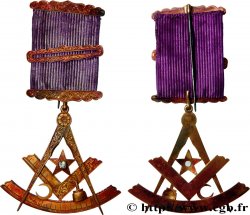
 Details
Details